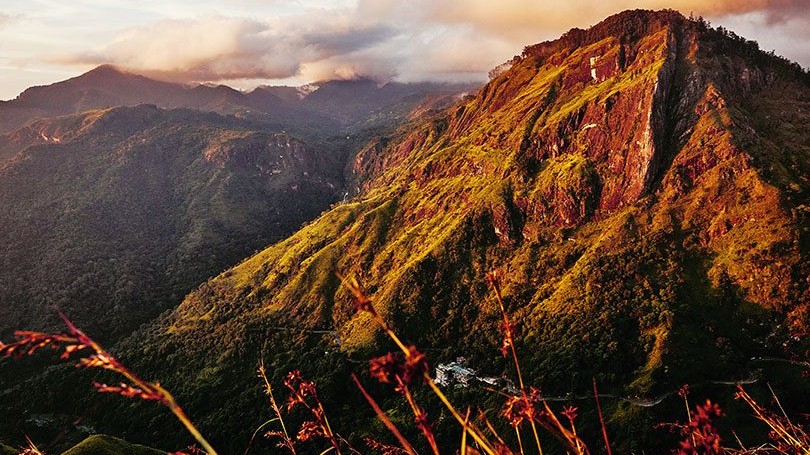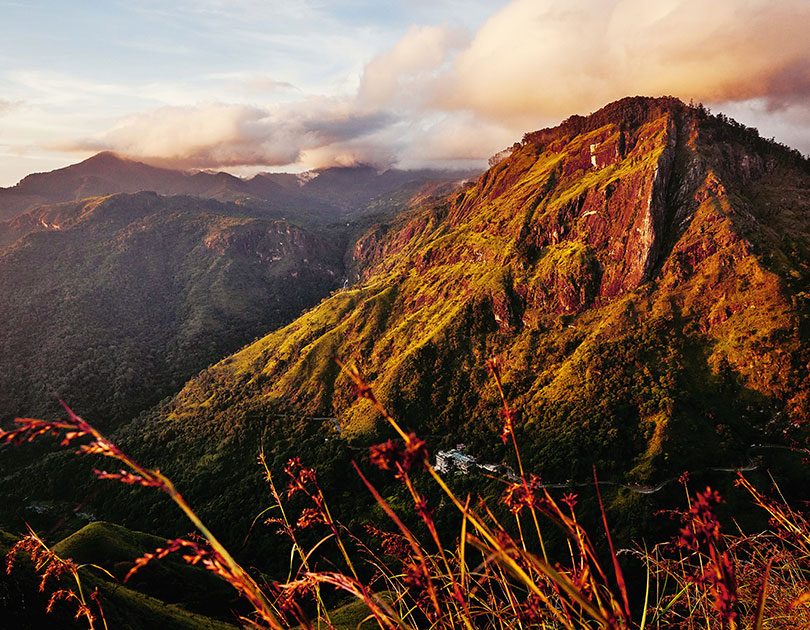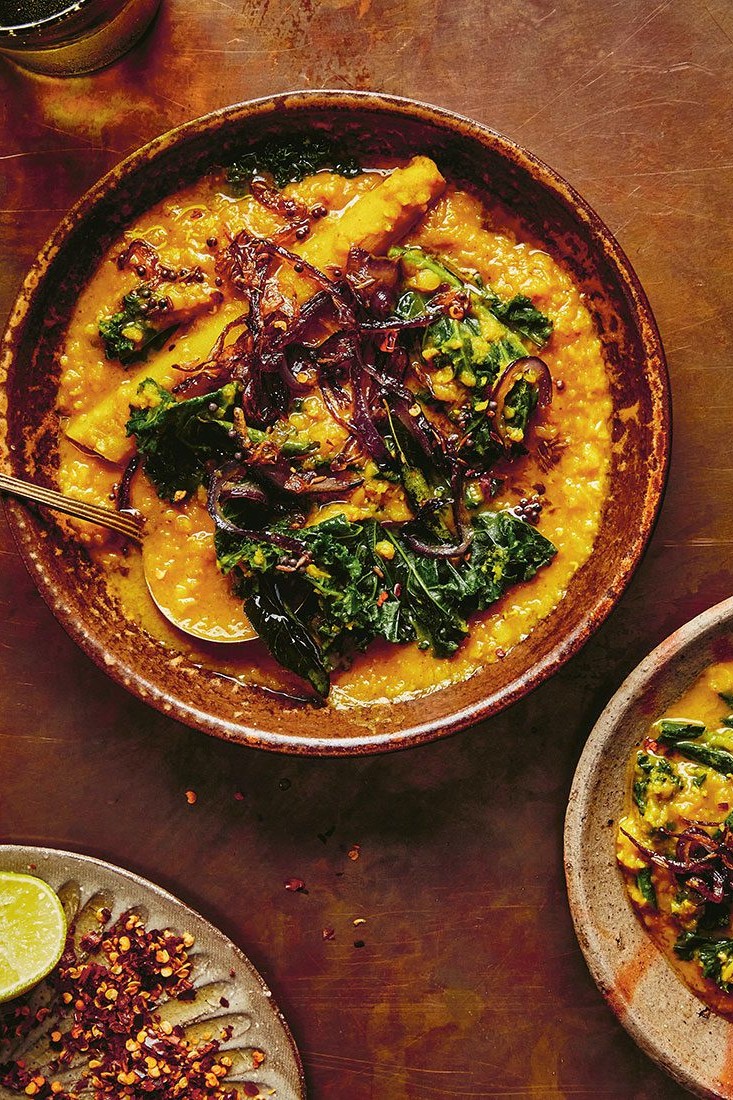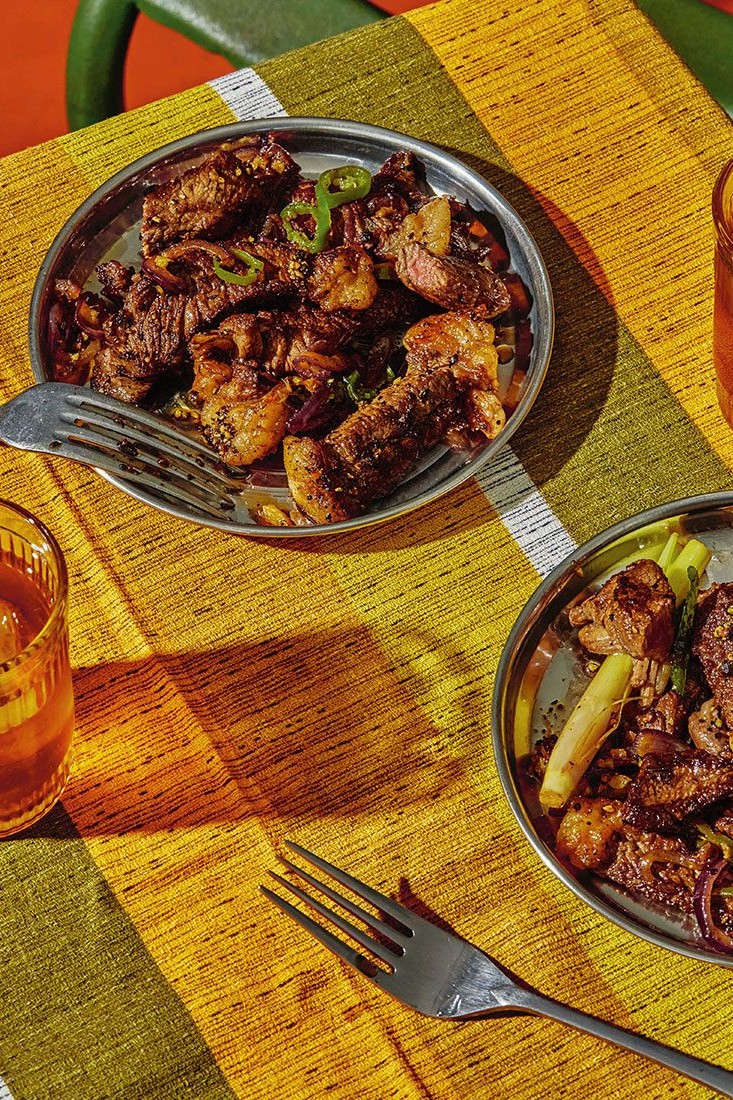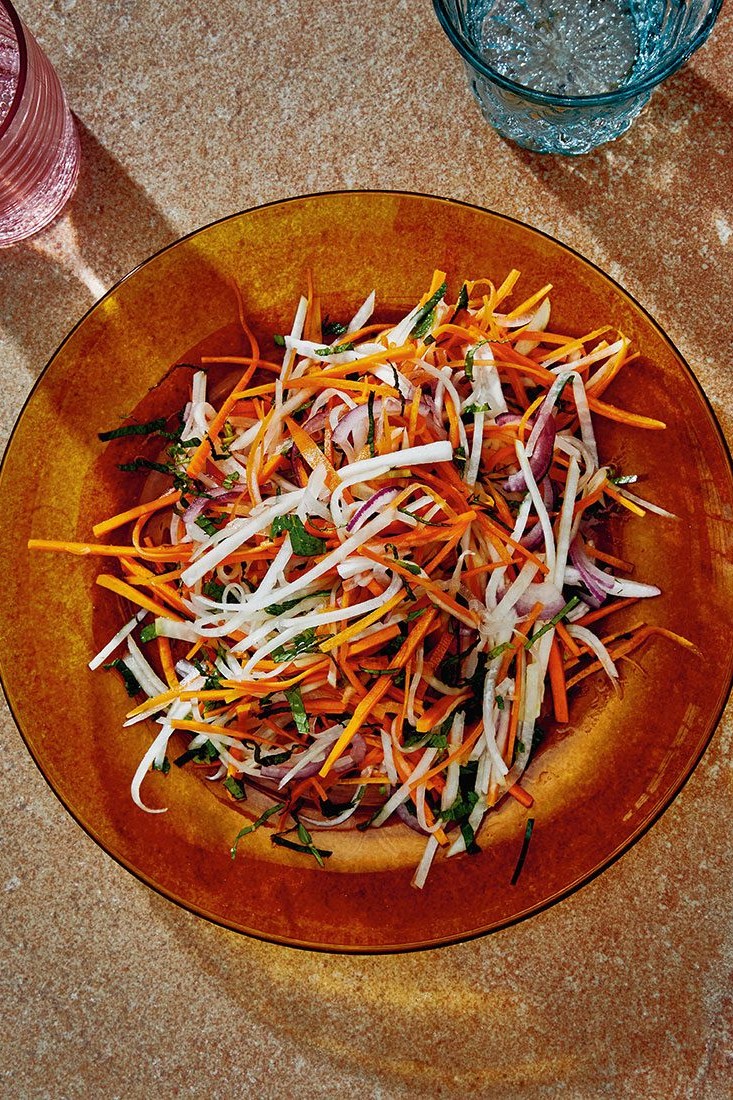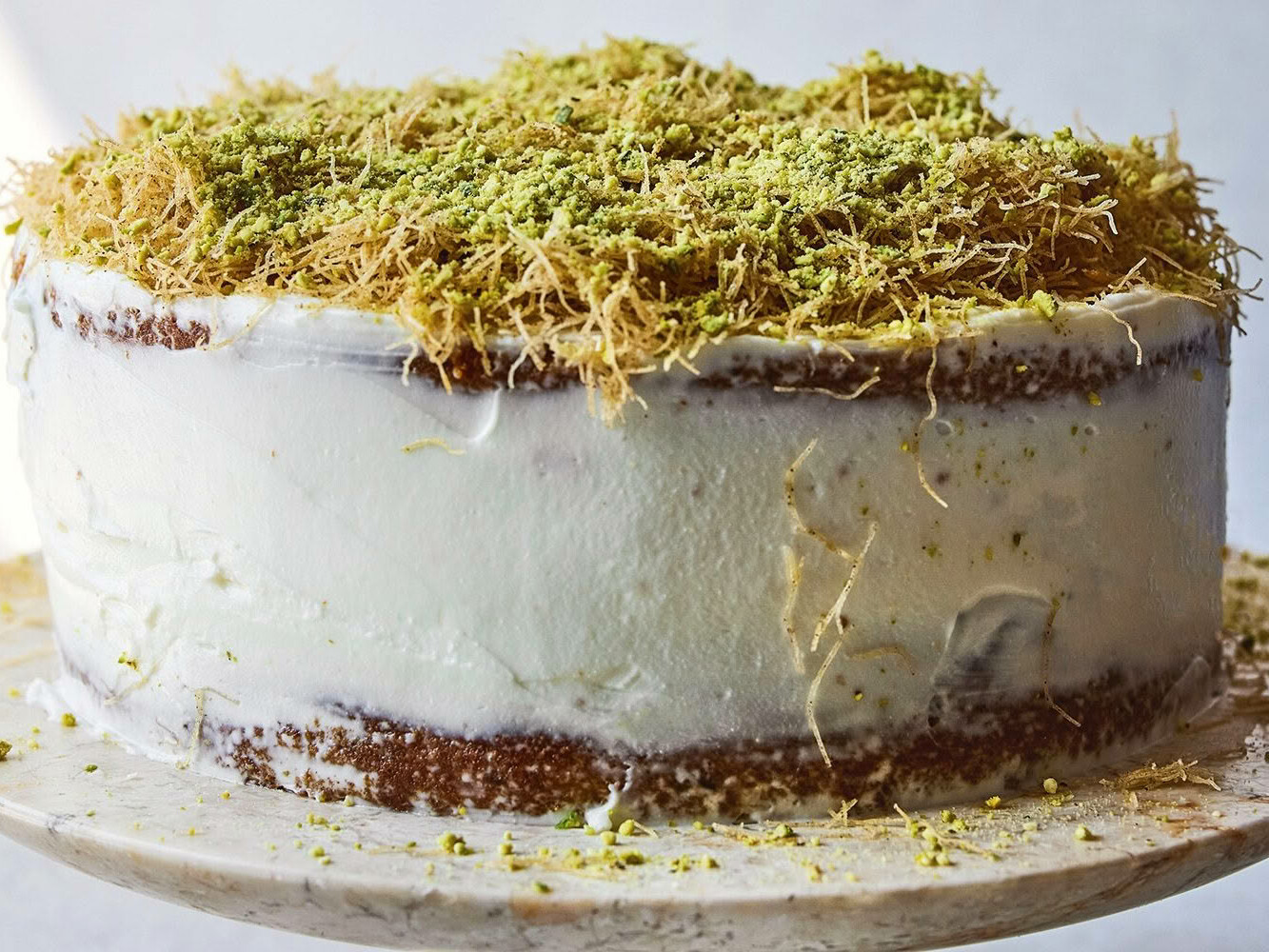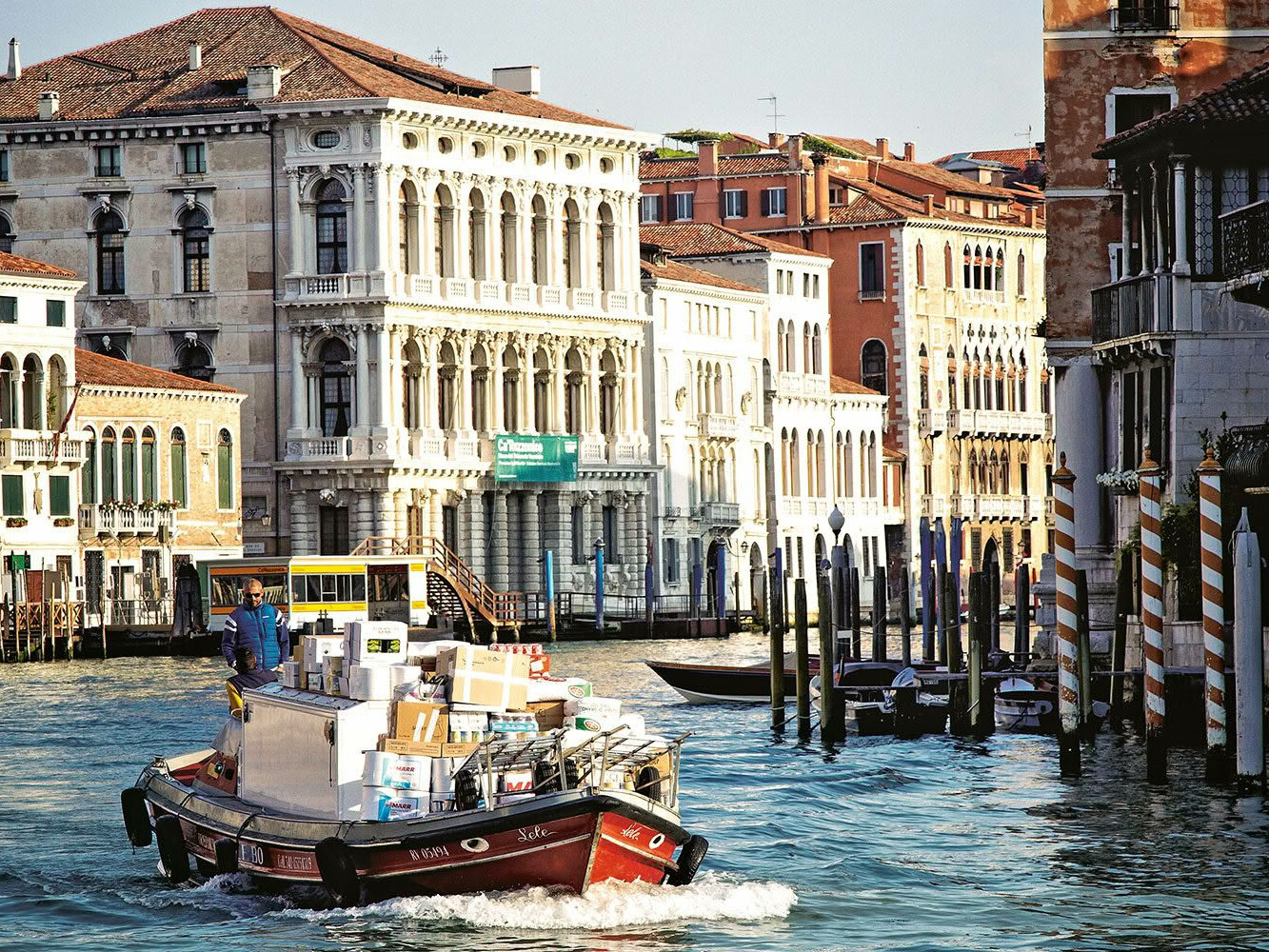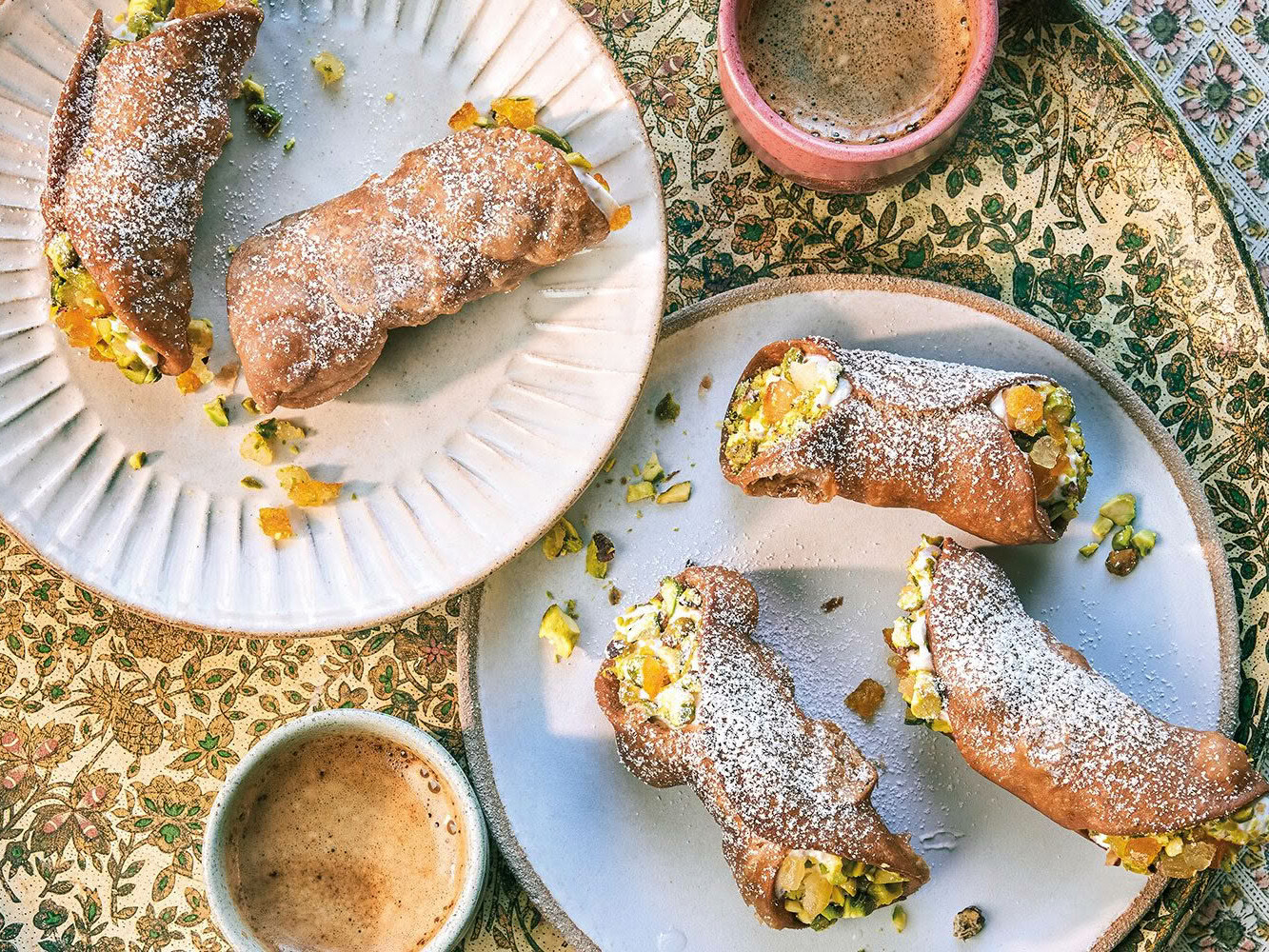The warmth, heart and soul of Cynthia Shanmugalingam’s Sri Lankan family shine in these recipes from her book, Rambutan.
At the top of point Pedro market, a few miles on a noisy bus from my parents’ house at the northern tip of Sri Lanka, you will find a whole storey of vegetable sellers. In the large, airy building, some feet away from the black and gold sand, you can still hear the Arabian Sea, ferocious with fish, crabs and catamarans. Beside the shouting in the fish market and above the rice guy with his nineteen different kinds of rice, the vegetable sellers sit cross-legged on a cement floor. Each one is surrounded by beautiful piles of fruit and veg, with slightly different specialisms and prices. When you walk past the okra guy, he says ‘yes! okra?’ in Tamil as if you had asked him a question. And if you glance at him in response, he starts snapping the ends off his okra with a serene smile on his face. The first time I saw this I was like, dude what are you doing? And my mum started giggling. Snapping okra this way demonstrates how fresh it is, she explained to me. Fresh okra should not be soggy or soft. It has a taut body and it will snap clean.
This is the kind of cooking knowhow that Mum – alongside almost everyone else in my Sri Lankan family – has always seemed to just know. Like all the great cooks from the island, they tend to prod, sniff, shake and listen to their ingredients with the kind of concerned familiarity of a chiropractor. They seem to have been born knowing just what fruit, veg, fish, meat, spices and rice to buy, when everything is in season, and how to turn it all into the wonderful Sri Lankan fare that they eat everyday.
Unlike them, I have had to learn a different way. When my parents left the island in the 1960s to live in England, they didn’t know that on the flight, thousands of years of culinary knowledge would be evaporated into thin air. Alongside my brother and sister, I could never quite pick up everything they knew ‘back home’, no matter how many withering looks my father gives me when he asks me to go over to that vendor to pick out a pumpkin, and I return with a shit one.
And yet, I have learned how to make Sri Lankan food that is just as delicious as any I have eaten, and I know that by the end of this book, you will too.
Like Point Pedro market, this book is led by delicious fruit and vegetables, and over half the recipes are vegan. There are one or two rules that require a little effort, but the recipes are designed to deliver as much edible Sri Lankan joy as easily as possible. And at the same time, Rambutan is about my sense of the island, pieced together through a lifetime of travels, myths and memories.
Warning: I have not shied away from the country’s often painful history of war, colonial oppression, slavery, spice trading, poverty and proselytising in these pages. These chapters, too, are part of the story of our food. Rather than dimming the ingenuity and creativity of the island’s cooks, in successive generations, our ancestors created Sri Lanka’s culinary songbook. They combined the Javanese, Malay, Indian, Arab, Portuguese, African, Dutch and British influences that came into the island with Tamil, Sinhalese and indigenous cooking. Using both native ingredients to the island (like cinnamon, curry leaves and cassava) as well as ingredients brought in by its visitors (like chillies, tomatoes and cashew nuts), the result has been a delicious, unique food tradition that is completely our own, and – if I do say so myself – one of the world’s most unsung cuisines.
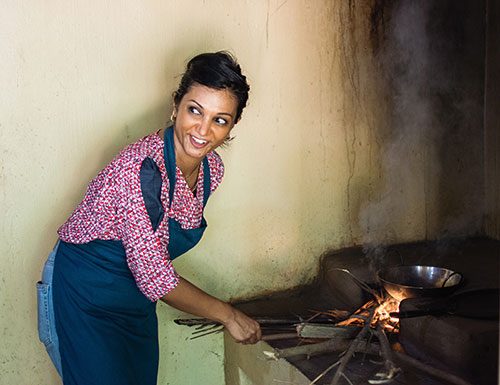
Today, a Sri Lankan table might include: crispy bowl-shaped hopper pancakes made of fermented rice and coconut milk, or fresh sambols made with green mango, raw carrots, or bright green chillies. There might be spicy red curries of roast aubergine or braised breadfruit cooked in coconut milk and smoky spices. There could be black curries, like pineapple or pork, cooked with toasted coconut, sugar and vinegar. There might be pillowy, crispy rotis; flaky, folded parathas; fragrant coconut rice porridges pongal and kiri bath; and epic sharing dishes, like a sticky chicken buriani or a complex lamprais. There should be lots of vegetables – perhaps a lemongrass and kale dal, a plantain curry, a cashew nut curry. There could be spicy fried things to eat with a beer or some tea – perhaps fried vadai doughnuts studded with shrimp, cumin, shallots and green chillies, or a nice crispy mutton roll with a dollop of hot sauce. There could be many of the island’s famous seafood and fish dishes, like a turmeric fish curry, tamarind prawns or most revered of all, crab curry; plenty of meat dishes like pickled pork curry or black pepper beef or a fried chicken and pol sambol sandwich and a hos of street snacks like spicy malu buns. And if you have a sweet tooth, you could finish off with a fruit and rose falooda; a watalappan jaggery and cardamom custard tart; some cashew-studded milk toffee, or to wash it all down, a cool drink or two.
I have been lucky to stuff my face with this food all my life, cooked for me, before I learned to cook it myself, by my mum, my grandmother and other absurdly hardworking Sri Lankans like them, almost always women. Sri Lanka’s different communities – Tamil, Sinhala, Muslim, Burgher and others – and its different regions, all have different cooking styles and specialities, and over a lifetime of travelling bac to Sri Lanka and eating at home, I have been able to sample almost all of them, and to learn their recipes. My family is Tamil, from Nelliady up in the very northernmost tip of the Jaffna peninsula, and my mum’s dad ran a set of shops in the Sinhala heartland of Hambantota, down in the deep south.
I don’t think being Sri Lankan in itself qualifies you as being a great cook or an authority on Sri Lanka (you only need to pop into my brother’s kitchen to be able to prove that). But I do think that learning to taste and cook Sri Lankan food the way I have, from all the Sri Lankans who have taught and loved me, has given me a kind of special perspective on the island and its food.
We got to spend summers in the hill country with our cousins, climbing guava trees and chasing butterflies. We went up to Jaffna before the war became too intense, to see our family and eat home-cooked food. We travelled down into the belly of the deep south to see my grandfather’s old shops and the family members that still ran them, eating as we travelled, taking in the big cities of Colombo and Kandy, where Mum and Dad used to study and live.
When I went to university, my parents moved back to Sri Lanka and I began a tradition of going back each year, trying to forge my own adult relationship with the place, with my own friends and nights out and food experiences and opinions. And I began developing these recipes. It has not always been easy. In fact, it has been a universally maddening experience.
I’ve translated my grandmother’s fastidious recipes from blurry iPhone scans of scribbled recipes in old exercise books. I have had instructions shouted down the phone by Mum from Sri Lanka, and I have been taught all over the island in the kitchens of friends of friends and aunties of aunties. Sri Lankans have almost no tradition of writing recipes down: cooking skills are passed down in families usually by watching and observing, so you can only learn by doing the same. Even then, in my experience, Sri Lankans tend to give you mysterious and quixotic instructions like ‘cook it until it’s cooked’ or when you ask, ‘should I put coconut milk in now?’ respond, ‘yes, why not? Something new!’ You get contradictory but declamatory statements like, ‘nobody puts egg in hoppers, who told you that?’ and then, ‘yes, everybody in Sri Lanka puts eggs in hoppers, don’t be stupid,’ which have driven me close to giving up entirely.
This book is about paying homage to those amazing cooks, as well as demystifying some of the magic behind the food, and it contains a mix of traditional dishes and modern ones. Sri Lankans frequently have different cooking habits that might not make sense in a typical kitchen in the UK. They cook meat and fish for longer than we do, probably because there’s less refrigeration there and it’s safer to nuke all germs with high heat, which makes it tougher than we’re used to eating it. When I began cooking, I began switching things up a bit: cooking meat more gently, experimenting with making oil from prawn heads, making a jaggery custard in a silkier way, learning from books and cooking shows, then from doing street food stalls and pop-ups in London with the help of chef friends.
Cooking Sri Lankan food has become a way for me to create a sense of home in London, to feed friends, cook at parties and introduce the people I love to the food I love. Rambutan isn’t meant to be a comprehensive guide to every Sri Lankan dish out there, but is intended to be a mix of some of my reinventions and some treasured traditional dishes: part memoir, part manual, part travel guide. I hope that, as you cook the recipes yourself, you can step into my idea of Sri Lanka, one you can explore with the same wonder and excitement that I’ve had all my life.

